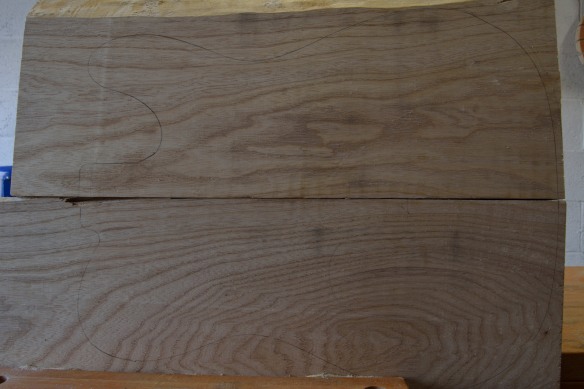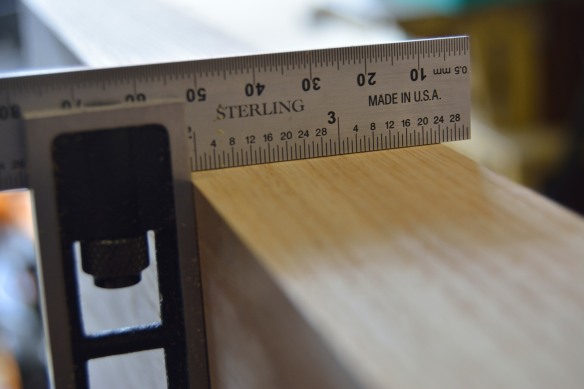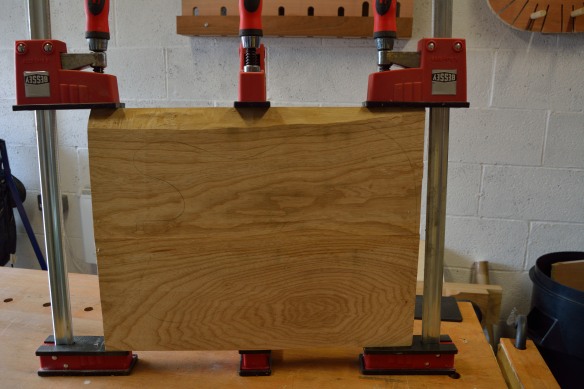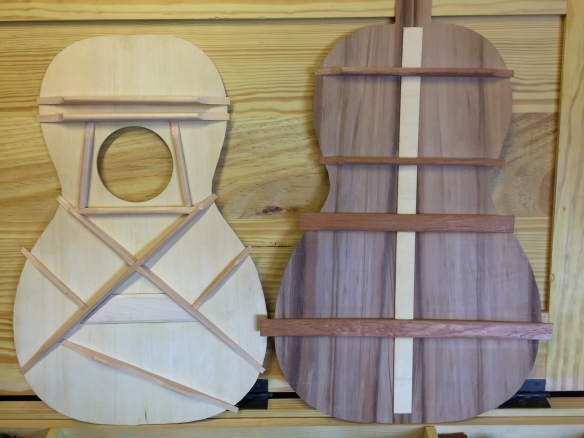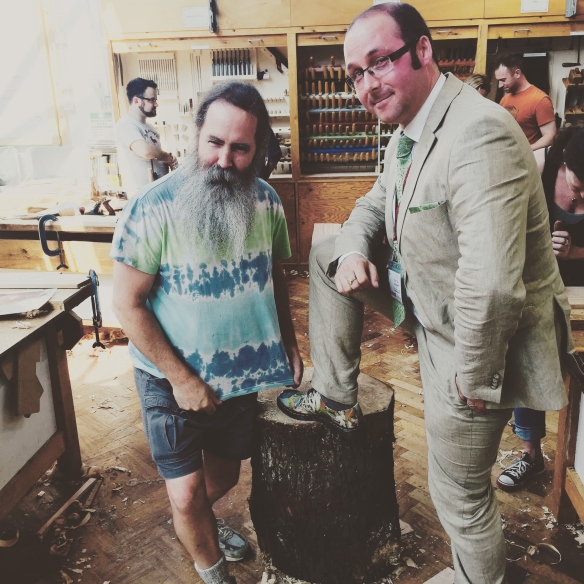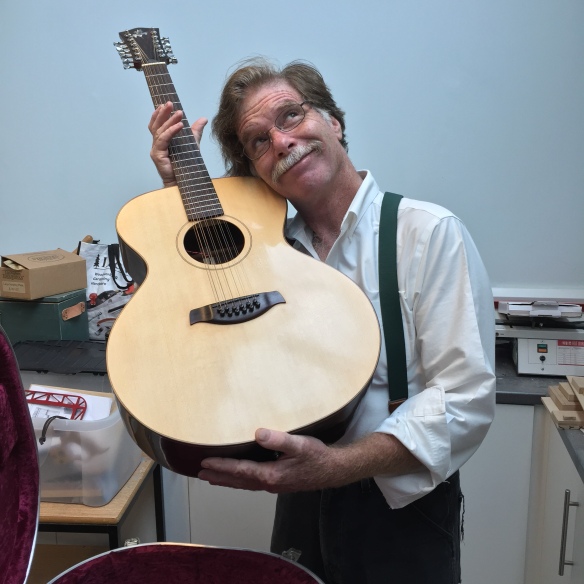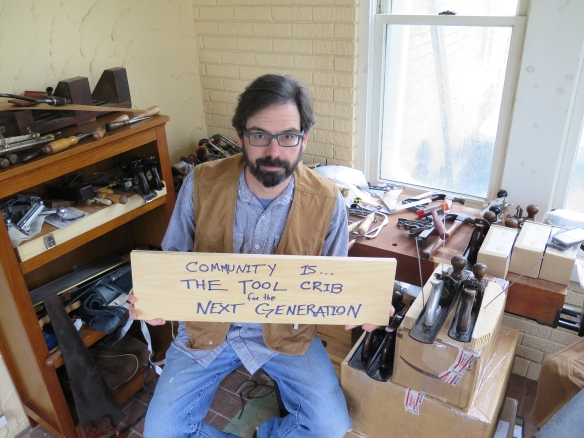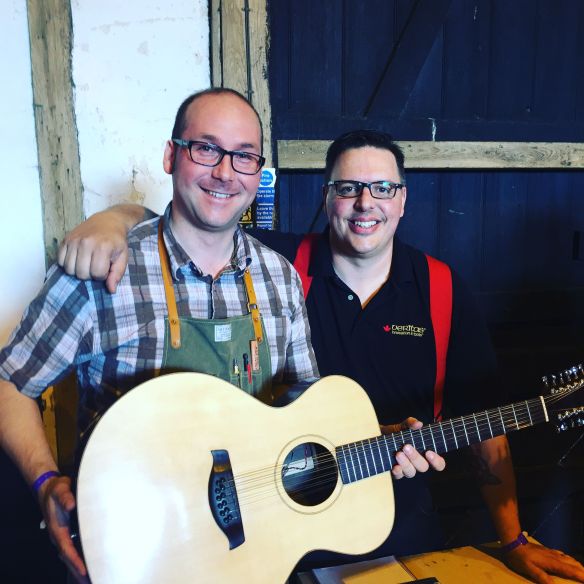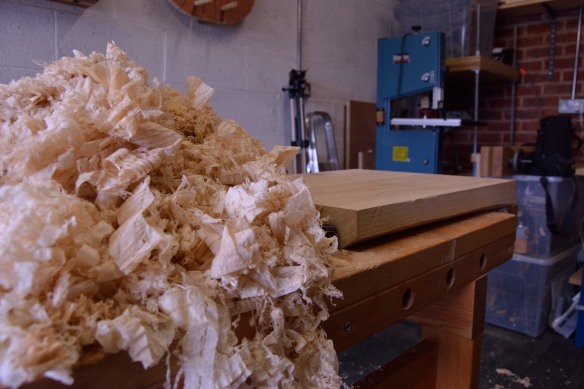
For me one of the most exciting moments of woodwork is cleaning up timber to reveal the final surface – even when you have a good idea as what to expect wood can often find a way to surprise you with unexpect figure, colour, or interesting grain. Planing the swamp ash body for the Mysterycaster was no exception.
Once the glue had cured on the body joint I broke the timber out of the sash cramps and secured it between four bench dogs using my end vise. Whenever I worked a jointed panel I always plane the area around the joint first, to make sure that there are no unexpected problems and that the joint is solid. Even when I feel confident about a joint, the grand reveal under a plane blade is an exciting moment tinged with tepidation – will I find unexpected horrors from the glue-up? Fortunately, working the joint on the front of the body with my low angle block plane revealed a good tight joint with no visible glue line or gaps – the only indication that the body is commprised of two pieces is the sudden change in grain pattern along the joint. The same was true of the joint line on the back of the timber, so all in all I’m satisfied with this joint.

The front of the body, cleaned up and ready to be cut to shape.
Although I do give timber a final sand before finishing, I prefer to use the planed surface as far as possible, and so my focus in planing the front of the guitar was to flatten it and achieve a clean, and tear-out free, surface. Fortunately the front was reasonably flat, and so I skipped using a jack plane and went straight for the No.8 Jointer. Achieving as flat a front and back as possible for the guitar is important, so that they will provide a consistent reference surface when radiusing the corners of the body later on in the build process. Setting the No.8 plane to an increasingly fine cut as I flattened the front of the guitar resulting in a gorgeous and clear surface. Using a jointer plane as a “super-smoother” isn’t practical in many instances, but just occasionally the extra work is justified.

A near-mirror finish right off the plane, and wafer thin shaving.
With the front flattened, I moved my attention to the back, and it was here that the swamp ash surprised me. I started by marking on three edges of the timber the thickness of the timber from the front using a marking gauge (the fourth edge was significantly bevelled on the front so I had no accurate datum line to work from). Again, as very little material was to be removed, and I wanted as flat a surface as possible, I reached straight for the No.8. Which worked beautfully on one half of the timber. However, on the other half, right where the lower bout of the guitar will dip into the belly curve, my plane uncovered some really striking rippled grain, of which there had been no indication before starting work. Even set to a very fine cut, my freshly sharpened No.8 tore out (not something which happens very often as this plane seems to ignore grain direction). My usual strategy to deal with tricky grain is to reach for a No.3 smoothing plane fitted with a mid pitch (55 degree) high angle frog. This cleaned up the difficult spots of grain, removing all tear-out easily, and then it was a simple matter of flattening the rest of the back to match.
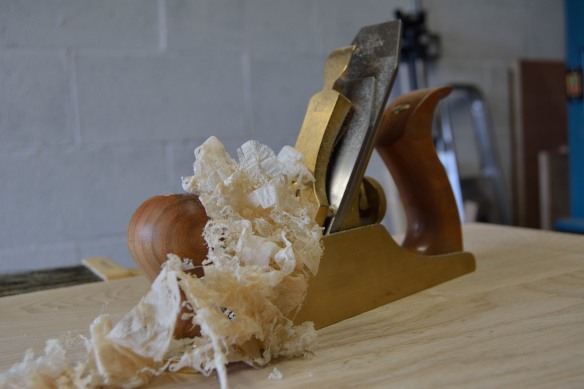
The Lie-Nielsen No.3 Smoother with high angle frog is my go-to choice for dealing with difficult grain.
But man, that grain. That characterful and unexpected figure is a wonderful addition to the guitar – an element of visual interest which will look fantastic under a translucent butterscotch finish. For me Tele-type guitars are rugged workhorse instruments with gritty character – Keith Richards is said to have preferred Telecasters because he found the curve of the body to be perfect for hooking behind the heads of over-enthusiastic stage invaders! And I think the striking colour and swirl of the grain on the back of the guitar really emphasises this aspect of the guitar, without going as far as the bonkers knotty pine bodies some folk are currently using. So I am carefully positioning the layout of the body blank to retain as much of this figure as possible. Thank you, wonderful wood for this unexpected treat.
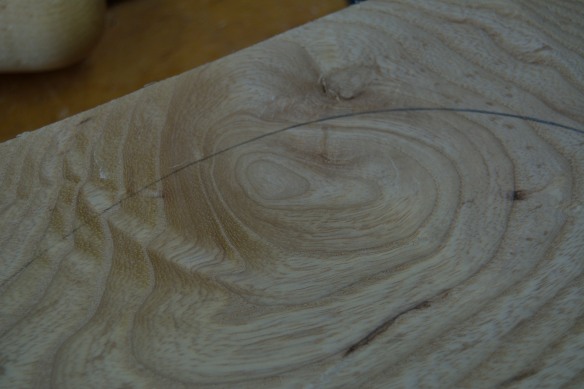
Here is that inexpected ripple and characterful grain, which will look stunning under a translucent butterscotch blonde finish.


